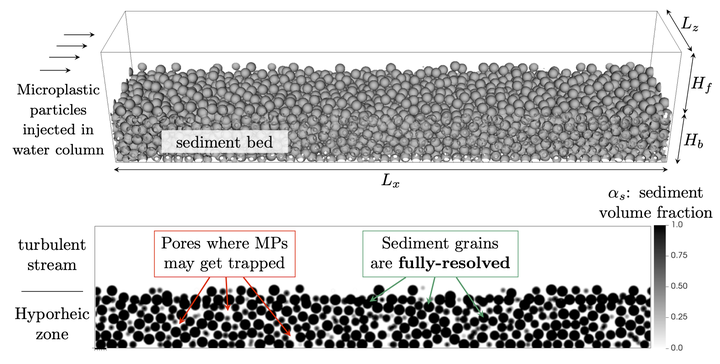Understanding the trapping of microplastic particles in riverbeds with synergistic pore resolving simulations and continuum modeling

Funding: National Science Foundation, EAR - Hydrological Sciences award #2409164 (2024 – 2027).
This project addresses alarming concerns about growing plastic pollution observed in rivers around the world. Microplastic particles, with sizes typically below 100 microns, account for over 80% of the plastic waste in rivers. A large amount of microplastic particles ends up within the pores of the bottom riverbed. This leads to the contamination of aquatic habitats and the food chain, as the small size of these particles (about the same size as plankton) makes them easily ingested by fish, oysters, and other animals. Despite these concerns, the processes controlling the trapping of microplastic particles in riverbeds are not fully understood. While effects related to turbulence at the interface between river stream and sediment bed, particle inertia, and biofouling-induced sticking are expected to have a large impact on the retention of microplastic particles within riverbed pores, there are limited studies that investigate these effects systematically. These knowledge gaps will be addressed in this research. Using high-fidelity numerical simulations and theoretical modeling, this project will reveal the physical processes involved in the trapping of microplastic particles in riverbeds and build a reduced-order model to predict the trapping rates efficiently and accurately. This research will enable a more accurate assessment of the impact of microplastic pollution on ecosystems and inform potential remediation strategies, such as new filtration methods implemented near sources of pollution (e.g., in wastewater treatment plants).
Related publications :